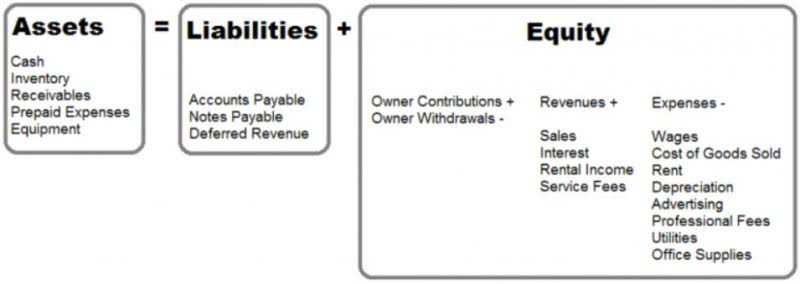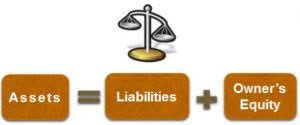
The more commonly used approach is to simply estimate the salvage value to be zero. This is safer and more conservative in accounting practices so potential auditing issues don’t arise in the future. An asset’s salvage value is the estimated amount the fixed asset can be sold for once its useful life is finished. what is salvage value This value affects the amount of depreciation reported each year during the asset’s life. The higher the salvage value of the asset, the less depreciation is deducted each year, which results in higher profits. Estimating too high of a salvage value can be deemed a fraudulent accounting practice since profits are then artificially inflated.

The Impact of Salvage Value on Depreciation Expenses
- Some companies might say an item is worth nothing (zero dollars) after it’s all worn out because they don’t think they can get much.
- As is clear from the definition, the value of equipment or machinery after its useful life is termed the salvage value.
- This calculation ensures that depreciation expenses reflect the asset’s anticipated residual value, leading to more accurate financial reporting.
- On the other hand, the market value approach takes into account the current market conditions and the potential resale value of the asset.
- This can enhance the decision-making process and improve the project performance.
Salvage value affects depreciation, a non-cash expense that influences net income on the income statement. A higher salvage value results in lower annual depreciation expenses, potentially inflating net income. Book value is the historical cost of an asset less the accumulated depreciation booked for that asset to date. This amount is carried on a company’s financial statement under noncurrent assets.
Is Salvage Value the Same as Scrap Value?
It includes equal depreciation expenses each year throughout the entire useful life until the entire asset is depreciated income statement to its salvage value. The second field is for the “Annual Depreciation Rate (%).” This is the percentage by which the asset’s value decreases each year. Different assets have different depreciation rates based on their expected lifespan and usage. For instance, if your asset depreciates by 10% each year, enter 10 in this field. Remember, the goal isn’t to make a perfect prediction (that’s almost impossible) but to make a solid estimate that helps you plan. Whether leasing a car, buying manufacturing equipment, or managing a fleet of vehicles, understanding residual value puts you in a better position to make sound financial decisions.

Debt Refinancing: Principles, Types, and Financial Impacts
- For tax professionals, it determines the correct depreciation deductions, thereby affecting a company’s tax liability.
- In summary, the estimated salvage value of an asset is a critical consideration in financial planning, asset management, and capital budgeting.
- If the machinery is well-maintained and technology hasn’t advanced too much, it might even sell for more than its salvage value.
- The basis cost of an asset includes any initial taxes, shipping fees, or installation costs.
- You must report any changes in salvage value to the IRS, as it may affect the amount of depreciation you can claim.
- The carrying value of an asset as it is being depreciated is its historical cost minus accumulated depreciation to date.
If your client’s businesses have any fixed assets, determining the salvage value of those assets is important later when calculating depreciation. Though there is no precise formula for calculating an asset’s salvage value, two methods are commonly used in practice. One of the most significant applications of salvage value is in the calculation of depreciation for assets. Net Present Value (NPV) and Internal Rate of Return (IRR) are common investment appraisal techniques that rely on salvage value. These methods assess the profitability and efficiency of capital investments.
- These examples highlight why salvage value is an important financial estimate.
- According to Generally Accepted Accounting Principles (GAAP), these costs should be capitalized and reflected on the balance sheet as part of the asset’s recorded value.
- This isn’t just the purchase price—don’t forget to include things like installation costs as well.
- The present value of the salvage value is the amount that the asset is worth today, given the expected future cash flow from selling it.
- One of the key environmental considerations when disposing of a total loss vehicle is the impact of the vehicle on local ecosystems.
- By considering salvage value, insurance companies can effectively manage their losses, while insured individuals can potentially recoup a portion of their financial investment.
If the salvage value is low, salvage yards may be less likely to purchase the vehicle or its parts, making it more difficult to find replacement parts for repairable vehicles. There are a number of ways to dispose of a total loss vehicle, from selling it to a salvage yard to donating it to charity. However, not all methods are created equal when it comes to environmental impact. It’s important to research your options and choose a disposal method that is responsible and minimizes the risk of harm to the environment. One of the key environmental considerations when disposing of a total loss vehicle is the impact of the vehicle on local ecosystems.

- When an insured property is declared a total loss, the insurance company becomes the owner of the salvage.
- Remember that while formulas and methods provide a framework, real-world judgment and context play a vital role in determining salvage value for specific assets.
- When an asset or a good is sold off, its selling price is the salvage value if tax is not deducted then this is called the before tax salvage value.
- Businesses must estimate how much an asset will be worth when it reaches the end of its useful life to ensure accurate financial reporting.
- The location and type of property may fit a certain potential purchaser, making it suitable for his or her needs and having distinctive value to him or her.
Salvage yards play a crucial role in Medical Billing Process the total loss assessment process as they are responsible for buying the damaged vehicle or its parts. They use the salvage value to determine how much they are willing to pay for the vehicle or its parts. The salvage value also affects the availability of parts for repairable vehicles.
The tax rate that applies to the gain or loss may vary depending on the type and classification of the asset. At this point, the company has all the information it needs to calculate each year’s depreciation. It equals total depreciation ($45,000) divided by useful life (15 years), or $3,000 per year. This is the most the company can claim as depreciation for tax and sale purposes.